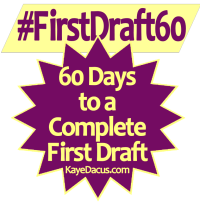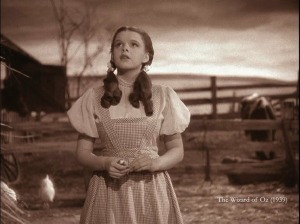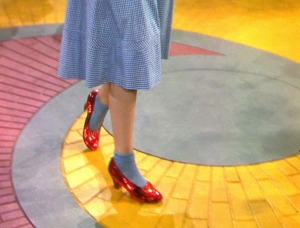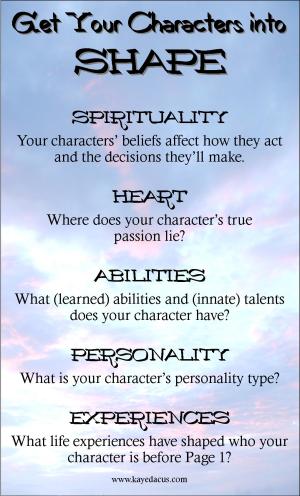#FirstDraft60 Day 11: Ambitions, Inducements, & Entanglements #amwriting #nanoprep #nanowrimo #gmc
 There are a couple of things lurking in the work you’ve (hopefully) already done up to this point which will be important to dig out and define at this point. No matter how wonderfully complex and well-developed a character is, readers won’t care about her unless they can identify with what she wants, what she is willing to do to get what she wants, and how she faces the challenges and obstacles that conspire to keep her from getting what she wants—otherwise known as Ambitions, Inducements, and Entanglements. You’ve never heard that turn of phrase before? Maybe you’re more familiar with the phrase . . .
There are a couple of things lurking in the work you’ve (hopefully) already done up to this point which will be important to dig out and define at this point. No matter how wonderfully complex and well-developed a character is, readers won’t care about her unless they can identify with what she wants, what she is willing to do to get what she wants, and how she faces the challenges and obstacles that conspire to keep her from getting what she wants—otherwise known as Ambitions, Inducements, and Entanglements. You’ve never heard that turn of phrase before? Maybe you’re more familiar with the phrase . . .
Goals, Motivations, and Conflicts
“Every character should want something, even if it is only a glass of water.”
Kurt Vonnegut
As you look back through the prep work you’ve already done over the past ten days, your main characters’ goals (what they want in the story) and their motivations (what makes them want what they want and what prompts them to go after their goals) should start becoming clear. It’s the conflicts (what keeps them from getting what they want for a few tens of thousands of words) that develop more slowly. But while it’s the conflicts that are the driving force behind your story, you must develop good goals and motivations for your characters as well.
It’s not interesting to read about someone who doesn’t want anything, who has no ambitions (goals). The stronger the ambition, the more likely the character is going to pursue them (motivations). The greater the ambitions and motivations, the more opportunities for that desire to be thwarted (conflict); therefore, the more interesting the story.
 Think about The Wizard of Oz. In the opening (B&W) part of the movie, Dorothy’s goal is to leave the drudgery of life in a Kansas farmhouse and go “Somewhere Over the Rainbow.” Almost immediately, the fulfillment of this desire is thrust upon her in a somewhat violent and traumatic manner. Desire met. Story over, right?
Think about The Wizard of Oz. In the opening (B&W) part of the movie, Dorothy’s goal is to leave the drudgery of life in a Kansas farmhouse and go “Somewhere Over the Rainbow.” Almost immediately, the fulfillment of this desire is thrust upon her in a somewhat violent and traumatic manner. Desire met. Story over, right?
Of course not! Once Dorothy arrives in Oz, the story turns to a focus on what motivates her to “follow the yellow-brick road”—the desire to get back home to Kansas (this becomes her story goal). If she attained the story goal as quickly as her initial desire was fulfilled, if she followed the yellow-brick road all the way to the Emerald City with no one to stop her—even if she did meet the same quirky folks along the way—it would not be a very interesting story (nor take very long to tell!).
Sol Stein describes plotting at its most basic as “putting the protagonist’s desire and the antagonist’s desire into sharp conflict. . . . think of what would most thwart your protagonist’s want, then give the power to thwart that want to the antagonist” (83).
Along her journey, in Dorothy’s quest to fulfill her desire, she meets with one conflict after another brought upon her by the main antagonist of the story, the Wicked Witch of the West. But the witch wasn’t thwarting her just to thwart her. She had a desire as well: to retrieve the magical ruby slippers which were on Dorothy’s feet and held the key for Dorothy’s return home.
Dorothy’s desire (home) is one that everyone can understand; it’s what Stein calls universal: “The wants that interest a majority of readers include gaining or losing a love, achieving a lifetime ambition, seeing that justice is done, saving a life, seeking revenge, and accomplishing a task that at first seemed impossible” (84).
In my genre, this universal desire is built in: gaining a love. Love, money, and power, according to Stein, are the three themes which create the greatest conflict, which is perhaps why the romance genre makes up more than half of all popular fiction sold. However, “falling in love” is not usually the main desire of the main characters of a romance novel.
In my contemporary romance, Stand-In Groom, Anne’s desire is to run a successful business, remain independent, and perhaps—after ten years of living with the regrets and bitterness of a broken engagement—“create her own happy ending.” So what antagonist comes up against this desire to create conflict? Why, that would be the hero, George Laurence, who comes to town desiring nothing more than to fulfill his contractual agreement to his employer to (a) plan his famous employer’s wedding and (b) keep the media from learning that his employer is getting married. Why do these two desires come into conflict? Because Anne and George are attracted to each other, and Anne believes that falling in love with the “groom” of the biggest wedding she’s ever planned will ruin her business.
Now, as we discussed in the Goals vs. Dreams series, it’s all well and good to have desires (dreams), but in order to fulfill those desires, one must set and achieve goals.
Your Characters’ Goals
Just like with writing, once we know our characters’ desires (dreams), we must set actionable, personally achievable goals to set the characters on their paths as the story moves along.
 Let’s go back to The Wizard of Oz for a moment. While getting home to Kansas is Dorothy’s driving desire, her specific, personally attainable goal for the purpose of the active plot is to make it from Munchkinland to Emerald City to seek help from the Wizard of Oz. Because there are multiple other characters with their own desires—and, thus, goals—Dorothy’s road to fulfilling her desire by working toward a specific goal is filled with conflicts. These conflicts seem like they might keep her from achieving her goal; but she finally reaches Emerald City and meets the Wizard.
Let’s go back to The Wizard of Oz for a moment. While getting home to Kansas is Dorothy’s driving desire, her specific, personally attainable goal for the purpose of the active plot is to make it from Munchkinland to Emerald City to seek help from the Wizard of Oz. Because there are multiple other characters with their own desires—and, thus, goals—Dorothy’s road to fulfilling her desire by working toward a specific goal is filled with conflicts. These conflicts seem like they might keep her from achieving her goal; but she finally reaches Emerald City and meets the Wizard.
But rather than fulfilling her desire, the Wizard gives her a new goal: to get the Wicked Witch’s broom stick and return it to the Wizard. She accomplishes this goal (“I’m melting. . . .”); and just when it seems like Dorothy will get to go home, after teary goodbyes, her desire is once again thwarted by the balloon taking off without her in it—she has achieved her goals, big and small, but not her overall desire. Enter Glenda the Good Witch who explains that the means to gain her desire was always within Dorothy’s reach—the ruby slippers. Once Dorothy learns that “there’s no place like home,” the story comes to its (somewhat) satisfying conclusion. (Am I the only one who ships Dorothy and the Scarecrow?)
Your character’s main desire shapes
his or her goals for your story.
In Stand-In Groom, Anne’s primary goal for the first part of the novel is to plan a wedding with a limitless budget, thus ensuring the future of her business, while her secondary goal is to fight her attraction to the man she thinks is the groom. When she discovers he isn’t the groom, her secondary goal changes to trying to trust him again (while continuing with the main goal of planning the wedding); after all, George has been dishonest with her about his identity for several weeks. Then, when she discovers the true identity of the groom, her secondary goal changes again. And, along the way, her desire changes to focus on putting happiness in her personal life first and her business second. While the hero and the man he works for (the groom) aren’t necessarily “villains,” it is through their actions—the hidden identities and goals of their own—that Anne’s desires and goals seem to be thwarted, which makes them antagonists.
Your characters’ desires and goals are all well and good, but if they have no motivation to follow-through and overcome the conflicts that arise, you have no story.
Your Characters’ Motivations
Go back through all of your prep work that you’ve done so far. Now is the time to start asking why. Why is your character who she is? Why does your character want what she wants? Why does she set the goals she sets, and not other goals, in order to reach those desires? Why is this goal the one that she’s willing to go to twelve rounds to achieve? And so on.
There are several aspects of your characters you need to work on and identify in order to determine what their motivations are (and this is the time to release your inner four-year-old and constantly ask “why?”). Let me refer you back to this:
- What is her main goal/desire?
- What will she do to attain it? (go deep here)
- What will she do when she meets resistance?
- How far will she go to achieve her goal/desire? (keep going deeper)
- What internal hindrances does she have that could keep her from achieving her goal? (Dig deeper than just fear—what is the root cause of the fear? What happened in the past to give her this fear?)
- What external hindrances could keep her from achieving her goal? (This can be the antagonist . . . or even the hero or other main character, family members, cultural restraints, geographic constraints, finances, etc.)
- Is there anything that could happen that would make her relinquish her goal? (If so, then you need to start over at the beginning, because this goal isn’t the right one.)
- Is this goal something she would sacrifice everything—her health, her wealth, her family, even her own life—to achieve? (Make her prove it by putting her in one or more of those situations.)

Just remember—this is a tool, a building block. Because no matter how detailed I get with SHAPE, or any other prep work we’ve done or will be doing, I always have a few revelations about my characters as I’m writing the story—things I never would have known about them until they were faced with a conflict and forced to own up to something from the past they kept deeply hidden, even from me, whether it’s a desire the character kept hidden from me, or the character telling me there’s a better way to structure his goals in order to achieve his desires because of something in his personality type or an ability or experience I don’t learn about until halfway through the draft.
Assignment 1: Answer the following questions for each of your viewpoint/main characters:
Conflicts
The conflicts in your story are the points that make up the majority of your plot. You will need minor conflicts (resolved in one or two scenes) and major conflicts—those that affect the outcome of the story. Rather than repeat myself, here’s a post that explains the difference between them and the necessity for each type of conflict:
Generating Conflict and Collecting Narrative Debt
In another series of posts, I have discussed conflict at length, and this is where Goals, Motivation, and Conflict come into union with each other:
It’s Good to Be Conflicted
Conflict: Thematic vs. Actual
Conflict: Desires and Goals
Conflict: Move That Bus!
Assignment 2: For each character’s main story goal, determine what the main conflict is that will keep them from easily attaining their main story goal—and who or what presents that obstacle/challenge/conflict to the character.
__________________________________________
Works Cited:
Stein, Sol. Stein On Writing: A Master Editor of Some of the Most Successful Writers of Our Century Shares His Craft Techniques and Strategies. New York, NY: St. Martin’s Press, 1995. Print.
Trackbacks
- #FirstDraft60 Day 14: Review & Catch-Up Day #amwriting #nanoprep #nanowrimo | KayeDacus.com
- #FirstDraft90: Days 1-30 Prep Work Schedule | KayeDacus.com
- #FirstDraft Planning Day 11: My Story Compass | KayeDacus.com
- #NaNoWriMo Prep: What Do You Already Know about Your Characters? | #amwriting #NaNo2018 | KayeDacus.com
Comments are closed.

Y’all, I am so far behind with my prep work this week! I still need to get caught up with SHAPE and then also work on yesterday’s assignment. Good thing that I’ve taken off the last three Thursdays of October in order to use up my paid time off at work (instead of lose it at the end of the year)—so that I can work on getting caught up!
Even if you’re behind like I am, please check in and let us know how everything is going for you. What are you enjoying about this process? What are you struggling with? What assignments have been revelations for you? Which ones have been not as helpful? How have you adapted these tasks to work for you?
LikeLike
And in addition to getting caught up with all the prep work from the last several days, I now have this inducement to procrastinate—two new research books!
LikeLike
I’m glad to hear I’m not the only one who has been behind! I haven’t gotten nearly as much done as I’ve wanted to since we started this month. Just the same, I am seriously loving these exercises! I finished a good, solid draft of my Goals, Motivations and Conflicts for each of my three main characters. As I worked through it, so many ideas for the story fell into place, and I feel like I’m getting much closer to understanding how it will unfold. My idea also changed quite a bit from what I originally thought it was going to be. I ended up cutting half my viewpoint character’s family and nixing one of the main themes that went along with them. As I honed in on who this viewpoint character is and what she really wants, I could see where I was off the mark and what needed to happen instead. I still have tons of blanks that need to be filled, but I feel much more confident after working through this exercise that I’m on the right track. By the time November rolls around, I think I will have a solid foundation and will be ready to write.
The more I work on these exercises, the more I appreciate how much effort you’ve put into this, Kaye. I’m learning so much about novel structure and planning, and I know it will make me a more efficient writer. If I had just done NaNoWriMo on my own, I wouldn’t have had these tools to draw from and I wouldn’t have put in so much legwork ahead of time. I tend to be a slow writer even when I’m trying to be fast and imperfect, so having this much done will really help me push through in one month. Thanks for sharing such good information with us, I am finding it so helpful!
LikeLiked by 1 person
This is the one assignment that I dread. I’m so bad at figuring this out ahead of time. (Which is why I still use the example from Stand-In Groom, which I finished in 2006 (as in, fourth or fifth draft, completed Master’s Thesis version “finished”). It still hurt my brain to analyze it for GMC after-the-fact. But with the way that this current manuscript got so far off track the first time I tried to write it (the first half of this year), I must make myself do this exercise, even if it turns out to be somewhat vague at first. And I think doing this in conjunction with writing out their backstories (the next assignment) will probably help.
LikeLike
Caught up! I found this is really hard (for romance because of story/character arcs?) – my heroine is apparently horridly stubborn as her main goal/desire remains the same throughout, even though my plot (at this point) is going to force her to alter it somewhat but my hero has a story start goal, a re-meet the heroine goal and then a whole new goal when the truth about their past together is revealed…which basically means for him I had to do this x3. lol Oddly enough, his GMC was 5 minute faster than hers to complete. 🙂 Feels good to have this “done”!
LikeLiked by 1 person
Yeah . . . I’m still procrastinating on this one. 😉
LikeLike
I don’t blame you, this assignment was the hardest one by far for me! So far… lol
LikeLike
I “discovered” my story goal while folding laundry. This CANNOT become something I must do every time I need to solve a story problem.
LikeLike
My house is never cleaner/more well-organized—or my laundry done or bed changed more often—than when I’m working on a story with some kind of deadline, whether a contract or self-imposed.
Look at it this way—if this is what it takes for you to get breakthroughs on your story, you’ll never be without clean, folded clothes, towels, sheets, etc. 😉
LikeLike